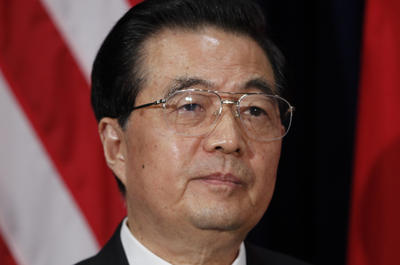The TPP is being sold in the US to a compliant media and unsuspecting public as evidence of American leadership on trade. But the opposite is true, and it is important that those who care about the global trading system know what is happening. One hopes that this knowledge will trigger what I call the ‘Dracula effect’: expose that which would prefer to remain hidden to sunlight and it will shrivel up and die.
The TPP is a testament to the ability of US industrial lobbies, Congress and presidents to obfuscate public policy. It is widely understood today that FTAs, whether bilateral or plurilateral (among more than two countries but fewer than all), are built on discrimination. That is why economists typically call them preferential trade agreements (PTAs). And that is why the US government’s public-relations machine calls what is in fact a discriminatory plurilateral FTA a ‘partnership’, invoking a false aura of cooperation and cosmopolitanism.
Countries are, in principle, free to join the TPP. Japan and Canada have said they plan to do so. But a closer look reveals that China is not a part of this agenda. The TPP is also a political response to China’s new aggressiveness, built therefore in a spirit of confrontation and containment, not of cooperation.
The US has been establishing a template for its PTAs that includes several items unrelated to trade. So it is no surprise that the TPP template includes numerous agendas unrelated to trade, such as labour standards and restraints on the use of capital account controls, many of which preclude China’s accession.
From the outset, the TPP’s supposed openness has been wholly misleading. Toward this end, the TPP was negotiated with the weaker countries like Vietnam, Singapore and New Zealand, which were easily bamboozled into accepting such conditions. Only then were bigger countries like Japan offered membership on a ‘take it or leave it’ basis.
The PR machine then went into overdrive by calling the inclusion of these extraneous conditions as making the TPP a ‘high-quality’ trade agreement for the 21st century, when in fact it was a rip-off by several domestic lobbies.
American regionalism closer to home shows the US now trying to promote the Free Trade Agreement of the Americas (FTAA). But its preferred template was to expand the North America Free Trade Agreement (Canada, Mexico and the US) to the Andean countries and include huge doses of non-trade-related issues, which they swallowed. This was not acceptable to Brazil, the leading force behind the FTAA, which focuses exclusively on trade issues. Brazil’s former President Luiz Lula Inácio da Silva, one of the world’s great trade-union leaders, rejected the inclusion of labour standards in trade treaties and institutions.
The result of US efforts in South America, therefore, has been to fragment the region into two blocs, and the same is likely to happen in Asia. Ever since the US realised that it had chosen the wrong region to be regional with, it has been trying to win a seat at the Asian table. The US finally got it with the TPP, simply because China had become aggressive in asserting its territorial claims in the South China Sea, and vis-à-vis India and Japan.
Many Asian countries joined the TPP to ‘keep the US in the region’ in the face of Chinese heavy-handedness. They embraced the US in the same way that East Europeans rushed to join NATO and the European Union in the face of the threat, real or imagined, posed by post-Soviet Russia.
America’s design for Asian trade is inspired by the goal of containing China, and the TPP template effectively excludes it, owing to the non-trade-related conditions imposed by US lobbies. The only way that a Chinese merger with the TPP could gain credibility would be to make all non-trade-related provisions optional. Of course, the US lobbies would have none of it.
Jagdish Bhagwati is Professor at Columbia University and Senior Fellow in International Economics at the Council on Foreign Relations, and is the author of Termites in the Trading System: How Preferential Agreements undermine Free Trade. This article was originally available here at Project Syndicate and is published here with the permission of the author.


Driven by international trade and foreign direct investment and aided by information technology, globalization has integrated the world into single global market, and forced every country – even the United States – to reform for global agenda. As the pervasiveness of the needed reform in the United States has become a global concern, the debate, thus, no longer “anti” or “pro” America, rather it has moved toward how to enlighten the U.S. of its foreign policy.
Instead of the usual statement about U.S. economic virtuosity and American’ being able to compete with anyone in the world, American scholars start to look inward and actually admit that the U.S. has some problems. For example, Wendell Berry in his article, “Faustian Economics: Hell Hath No Limits,” argues that “the problem with us (the U.S.) is not only prodigal extravagance but also an assumed limitlessness.” Also, Paulo Freire in “The Banking Concept of Education,” maintains that the narrative characteristics of American traditional education make students become objects similar to robots with no creative power for critical thinking essential to progress. Meanwhile, Po Bronson and Ashley Merryman, in their article “The Creativity Crisis” stress that the United States is facing creativity crisis when creative quotient, the ability to produce originality and innovative ideas, is three times more important than intelligence quotient. With abysmal test scores, the innovative crisis, the limitlessness habit, while the world is getting “flatter,” the United States sometimes needs advice for its foreign policy.